| Umělec magazine 2006/2 >> Get Real! | List of all editions. | ||||||||||||
|
|||||||||||||
Get Real!Umělec magazine 2006/201.02.2006 Oliver Kielmayer | u-sobě | en cs |
|||||||||||||
|
Forms of Communication Against Losing One’s Sense of Reality
Objectivity plays an important role in the (commercial) art system, since contemporary art finds itself in a constant state of latent insecurity. This is due to the inherent subjectivity of all aesthetic judgement, but is also due to the expected new-ness of a work of art. However, these days almost any shape can be attached to some conceptual justification. These relations are usually established by experts who claim to have accumulated a great amount of expertise in their field, whereas all others are not allowed any critical perspective on art in general. A judgement on art by experts is assumed to come into being on a strictly professional basis. Another assumption is that the few experts who are in charge of these evaluations are actually the best qualified in their field. When reflecting on their qualification, one needs to understand that society has generally developed a high degree of professionalism, not only in terms of contents, but also in terms of structure; in this particular case it means that decision makers in art are not necessarily those who are best qualified in a special field, but those who are best at understanding the dynamics of the path to a decision making position. It adds up to a higher degree of strategic and social competence in these experts in combination with a possibly lesser degree of actual artistic expertise. And again, nobody is free of personal preferences, dislikes and of making arbitrary or simply gut decisions even when it comes to professional decision making: The fewer opinions that are allowed into a discourse, though, the more limited the result will be based on the little amount of influx. Professionalizing the whole of this process does ironically amount to an increased influence of one privileged elite that has minimally the same amount of influence as that of expertise. The system of art consists of basically three parts: production, distribution and reception. These three parts are driven by artists, curators, critics, and other art-educators, by lecturers, collectors, and gallery owners who all have an integral part in the process. All the different professional fields or roles that have emerged in the field of art are not strictly separated from one another; at a close look one finds a large amount of sometimes unfortunate interdependencies in art. Only a few journalists and art critics are still able to make a living from writing about art alone, so they also work as teachers, curators or consultants. Quite often though, one needs to be referred for such an expert’s position by a third party. This third party is frequently the original first choice for the position but, due to their high degree of professional engagement, is unable to attend and then suggests someone else to fill in. An art critic will consequently think twice about writing a bad critique on an exhibition if the curator of museum’s director might later on suggest someone for a job on a panel of experts. In order to realize a project curators depend on grants from foundations. These foundations often have their own circle of curators and artists. This may well result in withholding the negative evaluation of an artist’s work or even displaying it in the exhibition as a favor when that artist is expected to be part of the panel to hire the next curator. It is to nobody’s surprise that artists that are looking for a gallery to exhibit their works tend to interact politely with gallery owners. The same accounts for curators that hope for connections with rich collectors: Neither have much of a choice in today’s situation of chronically under-funded museums and art societies. All protagonists within the inner circle of an art system pay gentle respect to the needs of these omnipresent interdependencies. This provokes a tied situation in which everyone tries to keep all one’s options open. Quite frankly, it is not uncommon to underline someone’s artistic achievement and broad acceptance when with the expert’s committee – only to later when among friends challenge that notion and question the value of an established work of art. There is, however, underneath all gentle hiding of real judgement an actual exchange of opinions and lively discourse – if only in small circles of trusted ones. The above outlined mechanisms and the resulting schizophrenia demand a new form of sensible reporting on art. Professional critique is still an important form of communicating art. Then again, explicitly subjective statements from artists, curators and art-educators and their respective forums could supply an interesting corrective sphere which would even counteract the arbitrary objectivity with a decided and reliable subjectivity. Professional discourses and their flawed, incomplete nature combined with a longing for authenticity provoked new television formats such as reality shows. Looking at the recent developments of communication in television history proves quite fascinating also in relation to the newly arising boundaries. After successful series like “Dynasty” and “Dallas” in the 1980s the emphasis shifted to a more life-like reality of average people. In the mid-1980s, “Lindenstraße” on German television, “Neighbours” or “Eastenders” on Anglophone TV still employed professional screen writers and actors. Soon after their emergence however, the format of reality TV was invented in which real stories were recounted by actors followed by real stories and real people on screen with no professional actors involved. MTV’s “The Real World” that started airing in 1992 made (supposedly) random people roommates whose life together was then broadcast on TV. This example was then followed by “Big Brother” from 1999 on. It is very interesting indeed that the initial turn towards reality was only a first step and has long been overruled by constructing and faking reality. The first season of “Big Brother” simply put a collection of different types of characters into one apartment. Today, the inhabitants of “Big Brother” do not simply share an apartment, but move for an indefinite amount of time into an artificial village built solely for this TV show. This new setting does allow for a more realistic interaction of the participants, but all in all it has developed to be even more artificial than before – re-constructing a quasi-real-life background. At the same time the candidates or participants of this show have become actor-like figures. This essentially means that the original impulse and demand for more reality that initiated the creation of reality TV has basically generated a new form of fiction that in turn manipulates reality. This shows that the platform provided in these TV formats is not only symptomatic for a societal trend, but also indicates that reality formats even support further fictionalization. These reality formats reflect society’s latent request for authenticity, which they are themselves, however, unable to deliver. This is caused by the above-mentioned effect of inversion and also by the natural boundaries of a medium like television. Television only allows for television – meaning that there are limits as to what can be done and what can be broadcast. Choosing candidates for these shows is already an immense limitation to actual reality – the characters with the greatest potential of conflict, scandal, and friction will be cast in order to ensure sufficient viewer response. Reality formatted art critique is located in the same field of tension in which it negotiates authenticity and the particular medium’s boundaries. Even in times of globalization the laws of regional or local dynamics are still in place. Most people who are the subject of a text will probably recognize themselves and subsequently its author. Using pseudonyms or just the initials of a person only decompresses the dilemma to a certain degree, yet it has a remarkable impact on the authenticity. It is, however, not only about mentioning names: authentic communication tends to be not only very explicit and blunt, but has a rude undercurrent and is often offensive. All reporters and art-educators have no choice but to remain part of the system of interdependencies in art; it is the reason why their stories are full of suspense. Comparable to the development that reality TV went through, authentic art critique is also at risk of inverting itself and re-manipulating its subject. It is in any case possible that communicating constructed reality may in the end really generate truthful statements. If and how well reality formats will work in the artistic contexts, if they are more than just a seasonal phenomenon and suffice to become an integral part of the artistic system, remains yet to be proven.
01.02.2006
Recommended articles
|
|||||||||||||
|
04.02.2020 10:17
Letošní 50. ročník Art Basel přilákal celkem 93 000 návštěvníků a sběratelů z 80 zemí světa. 290 prémiových galerií představilo umělecká díla od počátku 20. století až po současnost. Hlavní sektor přehlídky, tradičně v prvním patře výstavního prostoru, představil 232 předních galerií z celého světa nabízející umění nejvyšší kvality. Veletrh ukázal vzestupný trend prodeje prostřednictvím galerií jak soukromým sbírkám, tak i institucím. Kromě hlavního veletrhu stály za návštěvu i ty přidružené: Volta, Liste a Photo Basel, k tomu doprovodné programy a výstavy v místních institucích, které kvalitou daleko přesahují hranice města tj. Kunsthalle Basel, Kunstmuseum, Tinguely muzeum nebo Fondation Beyeler.
|







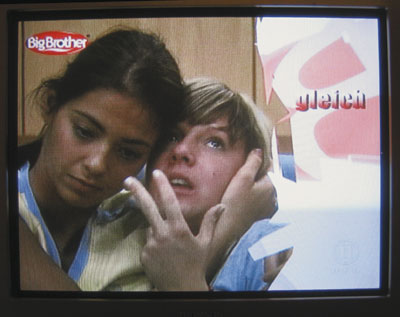




















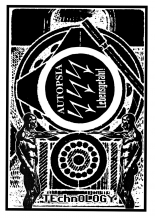
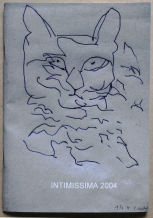
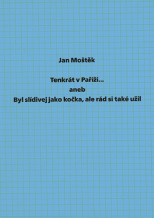
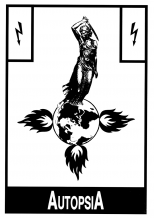


 New book by I.M.Jirous in English at our online bookshop.
New book by I.M.Jirous in English at our online bookshop.
Comments
There are currently no comments.Add new comment